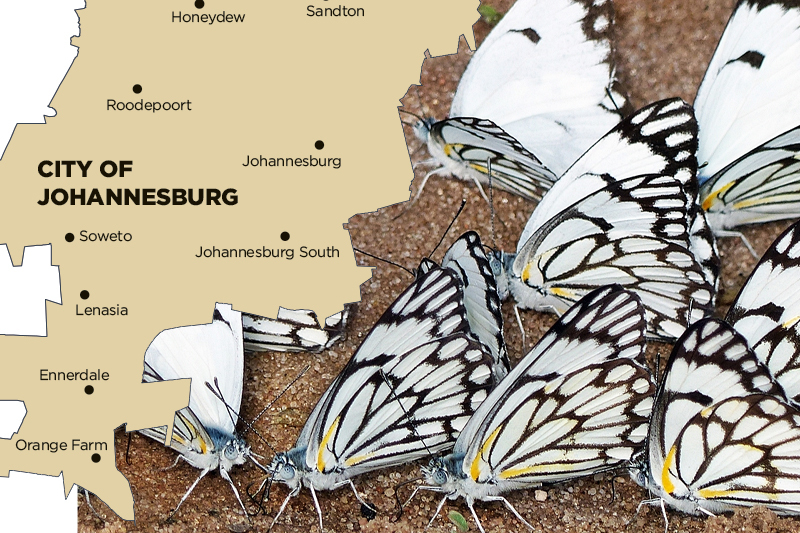
Johannesburg’s skies are bursting with white butterflies earlier than normal
The sky of South Africa’s Gauteng province, including the city of Johannesburg, fill with tiny white butterflies every year around mid-summer, sometime between December and mid-January. Some fly into gardens, where it is possible to see the fine brown markings on their wings up close. The name of the butterflies—brown-veined white butterfly—comes from these markings.
Also Read – Namibia thanks outcomes of climate change conference
On their annual migration, between 80,000 and 155,000 butterflies travel between the Kalahari region of South Africa and Mozambique via Gauteng, covering hundreds of kilometers. In search of food and moisture, they are leaving the dry Kalahari.
The butterflies migrate in a sizable group and do so very quickly; the majority pass through Gauteng in about a week. The ensuing butterfly clouds are a stunning sight that attracts the attention of locals as well as butterfly aficionados and researchers.
The butterflies have already come this year.
It could seem pointless. But to phenologists like myself, it’s proof of environmental shifts that demand close observation. The timing of cyclical biological phenomena, such as the jacaranda tree’s blossoming or a large butterfly migration, is known as phenology.
Also Read – Climate change can cut Indonesia’s rice and coffee produce: Report
Phenological phenomena are occurring sooner and earlier all across the world as a result of climate change. In most regions of the world, temperatures that once heralded the start of spring for plants and animals are increasingly happening earlier. The time and total amount of precipitation are also shifting concurrently.
For many, climate change is an abstract concept. Even if we are aware of it, the overall landscape continues to be the same for the time being. The 1.1°C post-industrial global temperature increase is not particularly noticeable. However, we do take notice when things like butterflies or jacarandas bloom earlier in our gardens. This is crucial for increasing public understanding of climate change.




